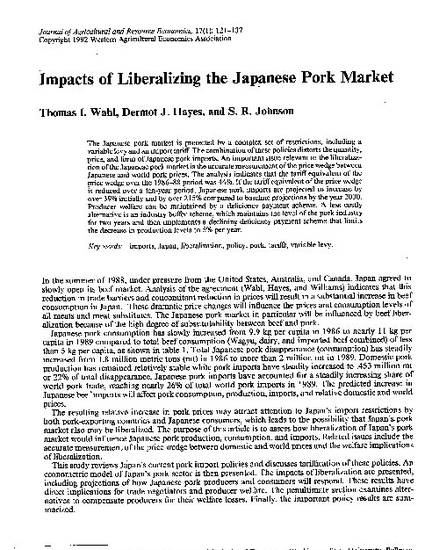
The Japanese pork market is protected by a complex set of restrictions, including a variable levy and an import tariff. The combination of these policies distorts the quantity, price, and form of Japanese pork imports. An important issue relevant to the liberalization of the Japanese pork market is the accurate measurement of the price wedge between Japanese and world pork prices. The analysis indicates that the tariff equivalent of the price wedge over the 1986-88 period was 44%. If the tariff equivalent of the price wedge is reduced over a ten-year period, Japanese pork imports are projected to increase by over 39% initially and by over 215% compared to baseline projections by the year 2000. Producer welfare can be maintained by a deficiency payment scheme. A less costly alternative is an industry buffer scheme, which maintains the level of the pork industry for two years and then implements a declining deficiency payment scheme that limits the decrease in production levels to 5% per year.
Available at: http://works.bepress.com/dermot_hayes/16/

This article is from Journal of Agricultural and Resource Economics 17, no. 1 (1992): 121–137.